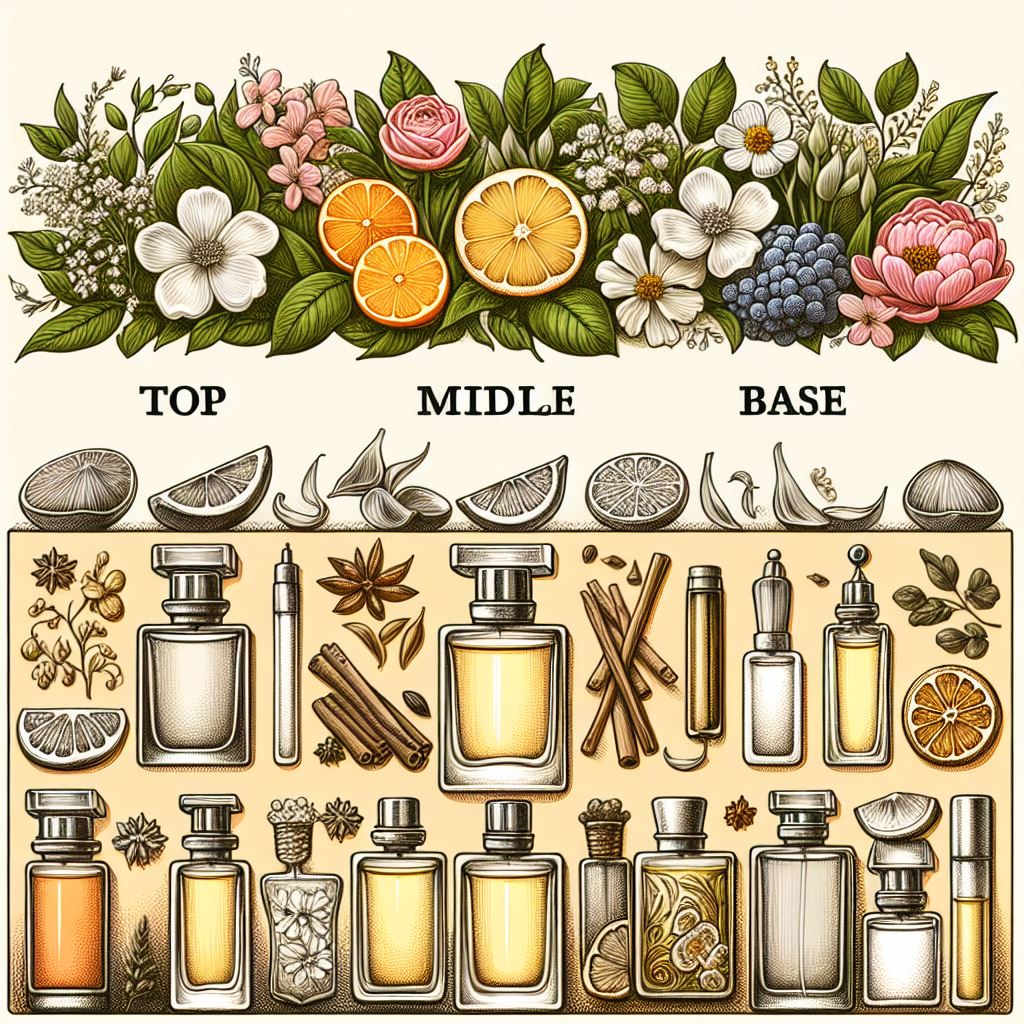
Perfumery: What are Top, Heart and Base Notes?
Share
Perfumes are complex compositions that evolve over time. To understand this evolution, it is essential to know the three categories of notes that make up a perfume: top notes, middle notes and base notes. Each of these notes plays a crucial role in the overall olfactory experience.
Top Notes
Top notes are the first impressions one gets of a fragrance. They are typically light and volatile, evaporating quickly after application. These notes are often fresh and crisp, designed to immediately grab attention. Citrus fruits (such as lemon, bergamot, and orange), aromatic herbs (such as mint and basil), and some spices (such as pepper) are commonly used as top notes.
Top note characteristics:
- Duration: A few minutes to half an hour.
- Role: To attract attention and give the first impression of the perfume.
- Examples: Lemon, bergamot, mint, lavender.
Heart Notes
Heart notes, or middle notes, appear after the top notes have evaporated. They form the core of the perfume and define its main character. These notes are longer-lasting than the top notes and can last for several hours. Heart notes are often floral, fruity or spicy, bringing depth and complexity to the perfume.
Characteristics of the heart notes:
- Duration: 2 to 4 hours.
- Role: Define the main character of the perfume.
- Examples: Rose, jasmine, cinnamon, ylang-ylang.
The Base Notes
Base notes are the last to develop and the longest lasting. They appear after the heart notes have evaporated and can linger for several hours or even all day. Base notes add richness and depth to the fragrance, often with woody, ambery, or musky aromas. They set the fragrance on the skin and prolong its duration.
Characteristics of the base notes:
- Duration: 4 to 12 hours or more.
- Role: Bring richness and depth, fix the fragrance.
- Examples: Sandalwood, vanilla, amber, musk.
The Evolution of a Perfume
The evolution of a fragrance through these three phases is often compared to a musical symphony, where each note plays an essential role in the overall harmony. Perfumers use this structure to create balanced and captivating compositions that evolve pleasantly over time.
By understanding top, middle, and base notes, you can better appreciate the complexity and craftsmanship behind each fragrance. The next time you try a new scent, take the time to notice how it evolves on your skin, from first impression to final traces.
